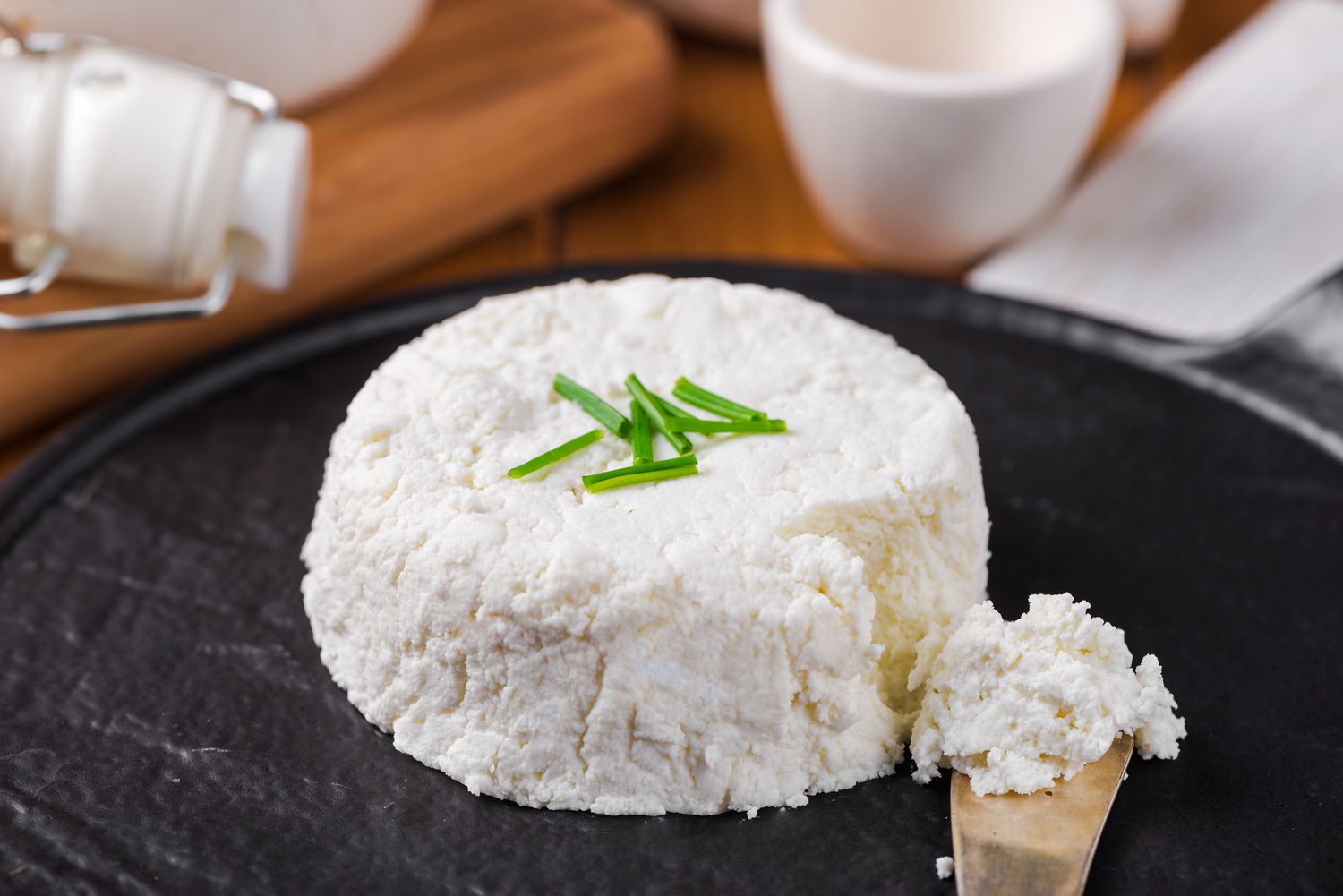
Goat’s cheese, also known as chèvre, is a delicious and versatile type of cheese that has been enjoyed for centuries. Made from the milk of goats, this cheese has a distinctive tangy flavor and a velvety texture that sets it apart from other types of cheese. Whether crumbled on top of a salad, spread on a baguette, or melted in a savory dish, goat’s cheese adds a unique and delightful taste to any recipe.
In this article, we will explore 15 fascinating facts about goat’s cheese that will deepen your appreciation for this delectable dairy product. From its origins to various types and uses, you’ll discover why goat’s cheese is a beloved staple in many culinary traditions around the world. So, if you’re ready to learn more about the wonderful world of goat’s cheese, read on!
Key Takeaways:
- Goat’s cheese is a tangy and nutritious cheese made from goat’s milk, offering a wide range of textures and pairing well with fruits, nuts, and herbs. It’s a versatile and healthy choice for cheese lovers.
- With a rich history and growing popularity, goat’s cheese is known for its unique flavor, lactose intolerant-friendly nature, and probiotic benefits. It comes in various shapes, sizes, and can be enjoyed fresh or aged.
Goat’s Cheese has a rich history.
Goat’s cheese traces its origins back to ancient times, with evidence of its consumption dating back thousands of years. This cheese has been a part of various cultures and cuisines across different regions of the world.
Goat’s Cheese is made from goat’s milk.
As the name suggests, goat’s cheese is made from the milk of goats. The milk is typically pasteurized and then coagulated using rennet or starter cultures, before being aged to develop its distinct flavor profile.
Goat’s Cheese is known for its unique flavor.
Goat’s cheese has a tangy and slightly acidic flavor that sets it apart from other types of cheese. This distinctive taste makes it a popular choice for various dishes, both savory and sweet.
Goat’s Cheese comes in different textures.
From creamy and spreadable to firm and crumbly, goat’s cheese offers a wide range of textures to suit different preferences. Some varieties are smooth and velvety, while others have a more crumbly and grainy texture.
Goat’s Cheese is highly nutritious.
Goat’s cheese is packed with essential nutrients such as calcium, protein, and vitamin A. It is also lower in fat and calories compared to certain other types of cheese, making it a healthier choice for cheese lovers.
Goat’s Cheese pairs well with various ingredients.
This versatile cheese pairs wonderfully with an array of ingredients, including honey, fruits, nuts, and herbs. It adds a delightful tang and creaminess to salads, pizzas, sandwiches, and pasta dishes.
Goat’s Cheese is popular in Mediterranean cuisine.
Mediterranean countries like France, Greece, and Spain are renowned for their traditional goat’s cheese recipes. From classic French chèvre to Spanish queso de cabra, these countries have mastered the art of goat’s cheese production.
Goat’s Cheese can be enjoyed in both fresh and aged forms.
Fresh goat’s cheese is soft, mild, and creamy, while aged goat’s cheese develops a stronger, more complex flavor as it matures. The aging process can range from a few days to several months, depending on the desired taste and texture.
Goat’s Cheese is lactose intolerant-friendly.
Many individuals who are lactose intolerant find that they can tolerate goat’s cheese better than cow’s milk cheese. This is because goat’s milk contains lower levels of lactose, making it easier to digest for some people.
Goat’s Cheese is a staple in many vegetarian and vegan diets.
As goat’s cheese is made from animal milk, it is not suitable for strict vegans. However, it is often included in vegetarian diets, providing a valuable source of protein and essential nutrients.
Goat’s Cheese comes in various shapes and sizes.
From small individual cheese rounds to larger log-shaped or wheel-shaped varieties, goat’s cheese offers a multitude of presentation options. This makes it a versatile cheese for both culinary and aesthetic purposes.
Goat’s Cheese has a distinct aroma.
Goat’s cheese has a characteristic aroma that can range from mildly earthy to pungent, depending on the age and type of cheese. The aroma adds to the overall sensory experience when enjoying this unique cheese.
Goat’s Cheese is a great source of probiotics.
With its natural fermentation process, goat’s cheese contains beneficial bacteria that can promote a healthy gut microbiome. These probiotics have been associated with improved digestion and overall well-being.
Goat’s Cheese can be made from different breeds of goats.
Various goat breeds can be used to produce goat’s cheese, contributing to subtle differences in flavor and texture. Common goat breeds used in cheese production include Alpine, Saanen, and Toggenburg, among others.
Goat’s Cheese has a growing popularity worldwide.
In recent years, there has been a surge in the popularity of goat’s cheese globally. Its unique flavor profile, nutritional benefits, and suitability for different dietary preferences have contributed to its increasing presence on menus and in households around the world.
Conclusion
Goat’s cheese is a delightful and versatile ingredient that has been enjoyed by food enthusiasts for centuries. It offers a unique flavor profile and a creamy texture that adds a special touch to various dishes. Whether you’re a cheese connoisseur or simply looking to expand your culinary horizons, learning about the facts surrounding goat’s cheese is both fascinating and informative.From its rich history to its nutritional benefits, goat’s cheese is a star ingredient in the culinary world. Its tangy and slightly sweet taste makes it a popular choice for both savory and sweet recipes. Whether crumbled over a salad, spread on a crusty baguette, or baked into a delectable tart, goat’s cheese adds a distinct flavor that elevates any dish.So, the next time you’re at the grocery store or planning a special meal, consider incorporating goat’s cheese into your culinary repertoire. With its delightful taste and numerous health benefits, this exceptional cheese is definitely worth trying.
FAQs
1. What is goat’s cheese?
Goat’s cheese is a type of cheese made from the milk of goats. It is known for its creamy texture and distinctive flavor.
2. Can people with lactose intolerance consume goat’s cheese?
Goat’s cheese is generally easier to digest than cow’s milk cheese due to its lower lactose content. However, it’s important for individuals with lactose intolerance to test their tolerance levels before consuming goat’s cheese.
3. Is goat’s cheese high in fat?
Goat’s cheese does contain a higher fat content compared to some other cheeses. However, it is also a good source of healthy fats, protein, and minerals.
4. How long does goat’s cheese last?
Unopened goat’s cheese can last up to a month in the refrigerator. Once opened, it should be consumed within a week.
5. Can goat’s cheese be substituted for other types of cheese in recipes?
Absolutely! Goat’s cheese can be used as a substitute for other cheeses in various dishes, adding its unique flavor to salads, pasta, pizza, and more.
6. Are there different types of goat’s cheese?
Yes, there are various types of goat’s cheese available, ranging from fresh and creamy to aged and crumbly. Each type offers its own distinct flavor and texture.
7. Is goat’s cheese suitable for vegetarians?
Yes, goat’s cheese is suitable for vegetarians as it is made from animal milk and does not contain rennet, which is often derived from animal sources.
8. Can goat’s cheese be frozen?
While it is possible to freeze goat’s cheese, it may alter the texture and taste. It is best consumed fresh for optimal flavor and quality.
9. Are there any health benefits of consuming goat’s cheese?
Goat’s cheese is a good source of calcium, protein, and vitamins. It also contains lower levels of lactose and cholesterol compared to cow’s milk cheese.
10. What are some popular recipes that feature goat’s cheese?
Some popular recipes that feature goat’s cheese include goat’s cheese and caramelized onion tart, roasted beet and goat’s cheese salad, and goat’s cheese stuffed chicken breast. The possibilities are endless!
Goat's cheese offers a delightful culinary experience, boasting unique flavors and nutritional benefits. From creamy spreads to crumbly aged varieties, this versatile cheese satisfies diverse palates. Goat's cheese is a fantastic addition to Mediterranean dishes, vegetarian meals, and even standalone snacks. Its rich history and growing global popularity make it a fascinating subject for food enthusiasts. For those seeking to expand their knowledge, exploring the nutrition facts of goat cheese can provide valuable insights into this delectable dairy delight. Embrace the world of goat's cheese and elevate your culinary adventures to new heights!
Was this page helpful?
Our commitment to delivering trustworthy and engaging content is at the heart of what we do. Each fact on our site is contributed by real users like you, bringing a wealth of diverse insights and information. To ensure the highest standards of accuracy and reliability, our dedicated editors meticulously review each submission. This process guarantees that the facts we share are not only fascinating but also credible. Trust in our commitment to quality and authenticity as you explore and learn with us.


